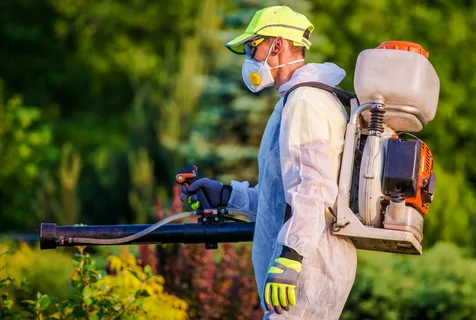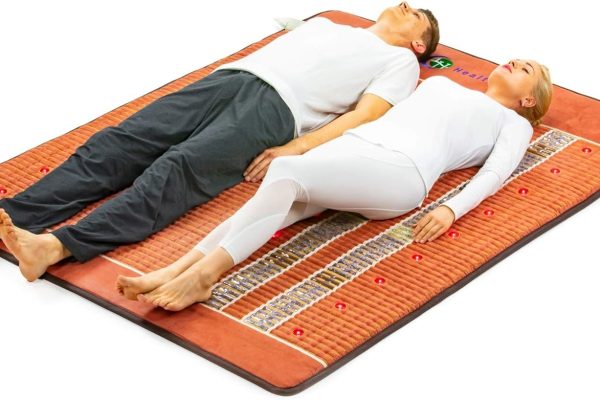Cardiopulmonary resuscitation (CPR) is a potentially life-saving intervention for a person who has gone into cardiac arrest. But why do you need to perform CPR? Knowing what to do when someone needs help is the first step toward playing a part in their recovery.
Rescue techniques like CPR follow ACLS algorithms designed by scientists to have the best outcome.
Learning CPR is essential for healthcare workers, but everyone can benefit from knowing how to do it. Whether you’re a babysitter, teacher, hospitality worker, or just an ordinary person on the street, if you perform CPR on someone in cardiac arrest, you can save their life.
Do you think you have what it takes to learn CPR and use it to save someone? Without CPR, the odds of someone surviving cardiac arrest are abysmal. Knowing what to do in a crisis can give someone a second chance at life.
What is CPR?
CPR is a technique that just about anyone can learn. It consists of two actions that attempt to help replace the normal function of a person’s heart and lungs.
The first action is a series of chest compressions, where the rescuer’s hands try to manually compress the heart repeatedly, moving blood around the body’s circulatory system.
When someone is in cardiac arrest, their heart isn’t beating correctly on its own, so they have no pulse. In addition, the victim’s lungs are not properly moving air in and out of the body.
That means that there isn’t adequate oxygen entering their blood and carbon dioxide starts building to toxic levels.
When a person’s blood oxygen level is low, they are experiencing hypoxia. When their tissues are not getting adequate oxygen, they are hypoxic. The condition is life-threatening.
In addition to compressions of the chest, the second half of CPR often includes providing ventilation for the patient.
Whether using a bag valve mask or performing mouth-to-mouth, the goal is to aid in gas exchange in the lungs. Helping the person take in oxygen and blow off carbon dioxide, even though their body isn’t doing so on its own, is the main element.
Why Is CPR Important?
In normal circumstances, a healthy individual’s lungs take in air. Gas exchange in the lungs gets more oxygen into the blood. Without adequate oxygen supply, our body tissue cannot survive.
Through heartbeats, this oxygenated blood travels throughout our circulatory system, bringing fresh oxygen to the cells that need it. When blood heads back to the heart, there is still some oxygen in it and waste products from our cells, like carbon dioxide.
Cardiac arrest represents a cessation of both breathing and heart function. That means that gas exchange isn’t happening, and the heart is not circulating blood properly. The threat to life is severe, and intervention is essential because time is of the essence!
CPR gives rescuers a way to create circulation and gas exchange, helping sustain life. While it’s not as efficient or effective as the body’s normal functions, it can be a bridge until other life-saving interventions are available.
For example, in the ALCS algorithms, rescuers will continue CPR while awaiting an automated external defibrillator’s arrival.
Once available, they will apply electrical leads from the AED to the victim’s body. The leads will help the device analyze the rhythm of any electrical impulses occurring in the heart. (Xanax)
If possible, the AED can use an electric current to restore a normal rhythm. It may take more than one shock to do so, and it’s not always successful.
Special automatic machines can aid rescuers with chest compressions. Their design allows rescuers to focus on ventilation, the application of the AED, and other interventions while the machine handles the approximately 120 compressions per minute that are part of CPR.
One thing you will learn about CPR is that manual compressions can be quite exhausting.
What Happens After CPR?
CPR training usually instructs rescuers to continue performing CPR until the person wakes up or a higher medical authority takes over. Unfortunately, the odds of surviving cardiac arrest are poor. Spending even a brief period without adequate blood flow and oxygenation of the brain is often lethal.
Though the deck is stacked against success, many times rescuers or laypersons succeed in saving people from cardiac arrest.
Why You Need to Learn CPR
Learning CPR is one of the best ways to prepare yourself for an emergency. There are quite a few reasons why you should learn to perform this life-saving technique and others.
Anyone Can Learn CPR
CPR training is available for anyone who wants to learn how to help victims of cardiac arrest. There are various levels of training, so you don’t need any background in healthcare to get started.
Then, once you master the basics of compressions, you can move on to more advanced skills, like using airway adjuncts or ventilatory equipment.
CPR Saves Lives
Each year, people with CPR training save lives. The odds of someone surviving cardiac arrest dramatically improve when they receive CPR quickly. And while it’s best to receive formal training, there are even types of CPR that you can perform with no training.
In an emergency, you should look for signs of responsiveness. If someone is not responding at all to verbal or even pain stimuli, check and see if they’re breathing.
If they’re not, or if they are gasping to breathe, call 911 immediately. The dispatcher will likely help coach you in trying to help the person.
911 dispatchers in many areas of the United States receive training to provide CPR instructions over the phone.
CPR Training Is Just a First Step
Even the most basic CPR training is a great way to learn how to help someone. It’s also a gateway to learning other ways to assist during medical emergencies. You can build on your CPR training and learn to use a defibrillator and how to provide first aid.
In addition to CPR training, you might want to consider taking classes that teach:
- First aid and Epi-Pen administration
- ‘Stop the Bleed’ from the American College of Surgeons
- Naloxone administration for opioid overdoses
- Basic Life Support (BLS)
- Advanced Life Support (ALS)
- Advanced Cardiac Life Support (ACLS) and ACLS algorithms
- Pediatric Advanced Life Support (PALS)
Heart Disease Is The Nation’s Biggest Killer
In the United States, heart disease is the leading cause of death. Heart disease is an umbrella term for various heart conditions, some of which can lead to heart attacks.
The good news is that you can reduce your likelihood of developing heart disease by making adjustments to your lifestyle.
If lifestyle changes alone aren’t enough, medicine can help.
CPR Helps Prevent Brain Death
In an emergency, every moment counts, especially when a person’s heart has stopped beating. Without blood flow to vital organs, life becomes unsustainable. When there isn’t enough oxygen in a person’s blood, the condition can result in brain death.
Perhaps no organ is more susceptible to the ill effects of hypoxia than the brain. By performing CPR, you maintain enough blood flow to bring oxygenated blood to the brain. The addition of ventilation can also help bring fresh oxygen into the body and even remove carbon dioxide.
CPR Classes Are Enjoyable
Some employers require certain healthcare providers to have a CPR certification before they can work. Getting your training might seem like a bit of a hassle. But it’s not.
CPR training is often led by people who have experience in using it. Taking a high-quality CPR course can be rewarding, educational, and fun. You’ll learn about how you can help someone who needs it and the science behind the techniques of CPR.
Plus, you’re going to be training alongside like-minded people who are motivated to help. The lessons are usually quite fun, and some CPR instructors can offer real-world wisdom and experience.
You Can Save a Life
Being in the right place at the right time is a crucial element of using your CPR training. Knowing you have the knowledge and skills to act if called upon is essential. If you’re working in a healthcare setting, it’s likely only a matter of time until you’ll need to employ your CPR skills.
But you never know when you might need to put your skills to the test. Cardiac arrest can occur at home, in a movie theater, restaurant, or right on the street.
Having the skills represents the first half of the CPR equation. The second half is being ready to use them if the situation presents itself. That’s why you should consider taking a course to learn CPR or even BLS and ACLS algorithms and skills.
Why You Need to Perform CPR: Conclusion
CPR is a potentially life-saving intervention for victims of cardiac arrest. CPR training is accessible to everyone, and anyone can master the basics. Every day people and healthcare professionals alike can benefit from learning about cardiopulmonary resuscitation.
However, the biggest beneficiary of your training will be the person who has no heartbeat and isn’t breathing. Your rapid intervention of chest compressions can help sustain their life until more definitive and higher levels of care can start.
If you’re interested in learning CPR, BLS skills, or ACLS training, don’t wait. Get started today!





